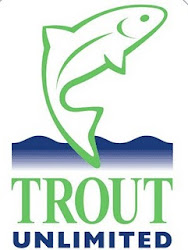I write this post late at night, in a boat, at sea. The boat is my brother-in-law’s. He, his sister–my wife, and all their family are from Central Europe. A love of of large waters and all things maritime runs in her family. In her father’s house is proudly displayed an old, official document honoring her great grandfather, a sea captain, for rescuing an Imperial vessel in the Adriatic Sea. Her father, himself, built his own sailboat, after the collapse of Communism, and races it very successfully. And a few years ago, after deciding the Danube River was too small for him and/or his boat, her brother rented a slip in Croatia, and now captains his own boat on the Adriatic.

Transylvania

Transylvania
Personally, I prefer mountains and clear running streams to massive rivers, lakes that cannot be seen across, and oceans or seas. And in many other ways, we inhabit the world rather differently, aside from the fact that we all love my wife and young daughter immensely. In fact, when visiting Central Europe, I now sometimes leave the family to go fly fishing for trout in Transylvania with Romanian friends. Or, I fish more locally for trout or asp with Hungarian friends.
During our current visit, my wife, and daughter, and I have joined my brother-in-law and his wife for a trip to Croatia and a few days on their boat. My in-laws, as usual, are kind and generous hosts, and it is amazing to see Dalmatia from the sea instead of from the road.

Zadar, Croatia
As it happens, I have been reading Herman Melville’s 1851 whaling epic
Moby-Dick or, The Whale. I read the fist pages during my late-night train ride to Romania to fly fish, and I have continued to read the book after rejoining family. In those first pages, I came across a long passage of Melville’s that has led me to recognize that I have another love in common with my in-laws, besides that for my wife and daughter. We all love water. Whether that water is small or large, running or still, sweet or saline, we love water. Indeed, in Melville’s words, we see the “key to it all” in “rivers and oceans.” Following is that long passage containing those words.
Here is an artist. He desires to paint you the dreamiest, shadiest, quietest, most enchanting bit of romantic landscape in all the valley of the Saco. What is the chief element he employs? There stand his trees, each with a hollow trunk, as if a hermit and a crucifix were within; and here sleeps his meadow, and there sleep his cattle; and up from yonder cottage goes a sleepy smoke. Deep into distant woodlands winds a mazy way, reaching to overlapping spurs of mountains bathed in their hill- side blue. But though the picture lies thus tranced, and though this pine- tree shakes down its sighs like leaves upon this shepherd’s head, yet all were vain, unless the shepherd’s eye were fixed upon the magic stream before him. Go visit the Prairies in June, when for scores on scores of miles you wade knee- deep among Tiger- lilies— what is the one charm wanting?— Water there is not a drop of water there! Were Niagara but a cataract of sand, would you travel your thousand miles to see it? Why did the poor poet of Tennessee, upon suddenly receiving two handfuls of silver, deliberate whether to buy him a coat, which he sadly needed, or invest his money in a pedestrian trip to Rockaway Beach? Why is almost every robust healthy boy with a robust healthy soul in him, at some time or other crazy to go to sea? Why upon your first voyage as a passenger, did you yourself feel such a mystical vibration, when first told that you and your ship were now out of sight of land? Why did the old Persians hold the sea holy? Why did the Greeks give it a separate deity, and own brother of Jove? Surely all this is not without meaning. And still deeper the meaning of that story of Narcissus, who because he could not grasp the tormenting, mild image he saw in the fountain, plunged into it and was drowned. But that same image, we ourselves see in all rivers and oceans. It is the image of the ungraspable phantom of life; and this is the key to it all.

Fly fishing for Amberjacks in the Adriatic Sea
















